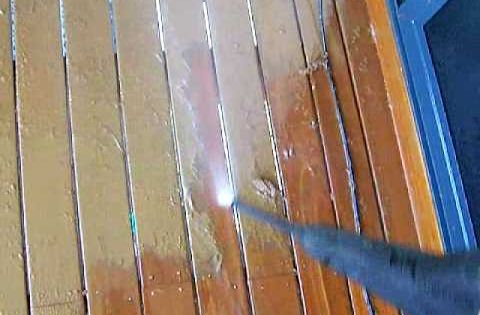One possibility is from a gable area if you have one since it doesn t look out of place in that area to substitute in a contrasting material such as this example.
Do i have to remove my deck for siding.
Only then do you have access to lift the building paper and apply peel and stick membrane and metal flashing the requisite 6 inches up the wall see illustration above.
You can take siding from another area of the house to fill in where the deck ledger will be removed.
Wood or concrete siding will have to be cut away using a circular saw.
To remove the stain you must strip the color off of the siding.
If this layer feels rotted in any way it s probably time to replace your siding.
It is not an uncommon occurrence for deck stain to splatter onto vinyl siding during application.
I have tried almost everything i can think of to get it off with no success.
The kind of deck you have in place can help determine which kind of sealant is best.
Exterior cleaning products aimed toward contractors and tough jobs remove deck stain from vinyl.
It s necessary to remove and replace several courses of siding to flash a ledger properly.
A beautiful well constructed deck can expand your living area in warm seasons bring family and friends together and provide much needed hang out space when you need to unwind.
The proper cleaner for the job depends on whether the deck stain is oil based or water based.
One option is a slight modification to another answer.
You can then trim the pieces to be reinstalled with a j channel after the deck is completed for a clean finished look.
Deck building can be incredibly satisfying both the process of building it and the f inished product.
Tearing into siding is all but inevitable if you build decks on existing houses.
Aluminum and vinyl siding can easily be removed with tin snips from an area one foot surrounding the ledger board location.
Follow the guidelines below to get the job done.
A bit of deck stain makes its mark on the vinyl siding much to your dismay.
Peeling paint or sagging wallpaper may indicate your aging siding is allowing moisture to seep beneath it and into your wallboard.





























